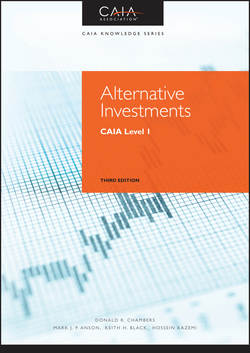Читать книгу Alternative Investments - Hossein Kazemi - Страница 51
На сайте Литреса книга снята с продажи.
PART One
Introduction to Alternative Investments
CHAPTER 3
Quantitative Foundations
3.5 Distribution of Cash Waterfall
3.5.2 The Compensation Scheme
ОглавлениеA key element of the managerial compensation structure is the nature of the incentives that align interests between fund managers and their investors. Investors and fund managers have an agency relationship in which investors are the principals and fund managers are their agents. The compensation scheme is the set of provisions and procedures governing management fees, general partner investment in the fund, carried-interest allocations, vesting, and distribution. As with all agency relationships, compensation schemes should be designed to align the interests of the principals (the LPs) and the agents (the GPs) to the extent that the alignment is cost-effective. It is generally cost-ineffective to try to maximize the alignment of GP and LP interests. For example, requiring huge investments into the partnership by general partners might initially appear to be an effective method of aligning LP and GP interests. However, GPs with a large proportion of their wealth invested in a single fund may manage the fund in an overly risk-averse manner.
The partnership agreement provisions, as well as other terms and conditions, such as investment limitations, transfers, withdrawals, indemnification, and the handling of conflicts of interest, tend to look quite similar across fund agreements. Surprisingly, fund terms have been relatively stable across the market cycles. The explanation for this phenomenon is that both fund managers and their investors have sufficient negotiation power to reject terms sought by the other side that differ substantially from terms widely used in the market, but not so much leverage as to move the market in one direction or the other.
Management fees are regular fees that are paid from the fund to the fund managers based on the size of the fund rather than the profitability of the fund. The purpose of management fees is to cover the basic costs of running and administering the fund. These costs are mainly the salaries of investment managers and back-office personnel; expenses related to the development of investments; travel and entertainment expenses; and office expenses, such as rent, furnishings, utilities, and supplies. Management fees are nearly always calculated as a percentage of the net asset value of the fund, typically between 1 % and 2.5 % depending on fund size, but may taper off after the investment period or when a successor fund is formed. Although the management fee's general calculation is relatively simple and fairly objective, there are controversies surrounding the finer details.
The general partners' investment in the fund is the amount of capital they contribute to the fund's pool of capital. GPs typically invest a significant amount of capital in their funds, usually at least 1 % of total fund capital, which is treated the same way as the capital contributed by limited partners. There are a number of reasons for this. For example, the GPs contribute a meaningful amount of capital to ensure their status as a partner of the fund for income tax reasons. More important, however, is that they contribute substantial personal wealth to the fund to help align the interests of fund managers and their investors. For all of the calculation examples that follow, the GPs' own investment in the fund is not being considered, because it has the same payoff as that of the limited partners. In other words, in this volume, the computations of the amount of cash being distributed to GPs ignore their ownership interest, since that ownership interest receives cash in the same manner as the LPs.
